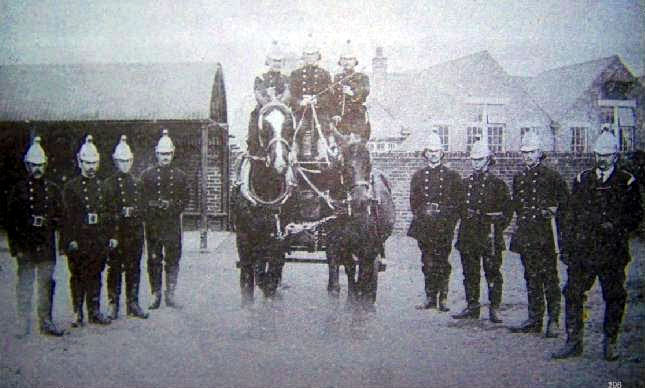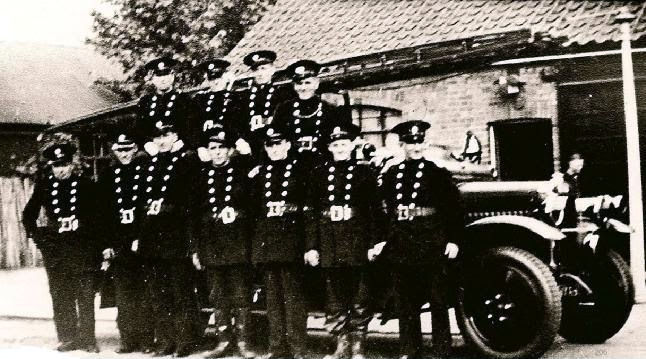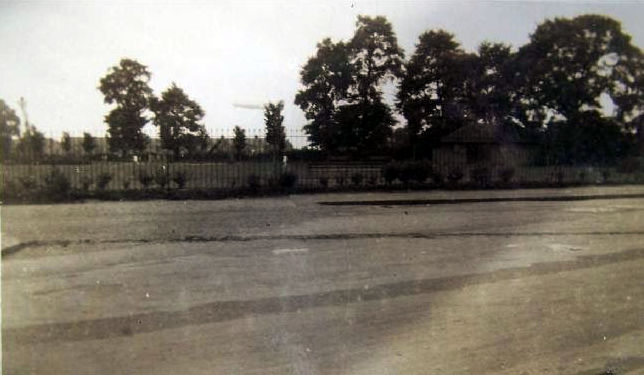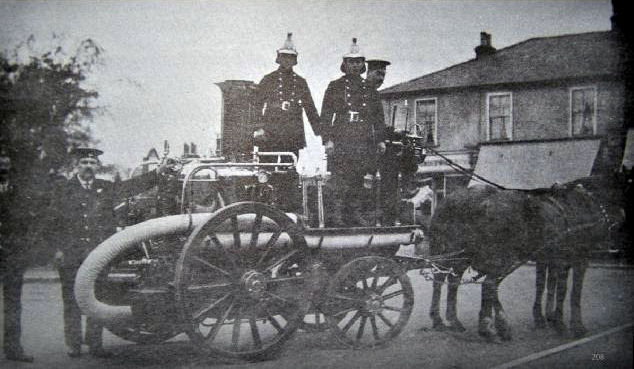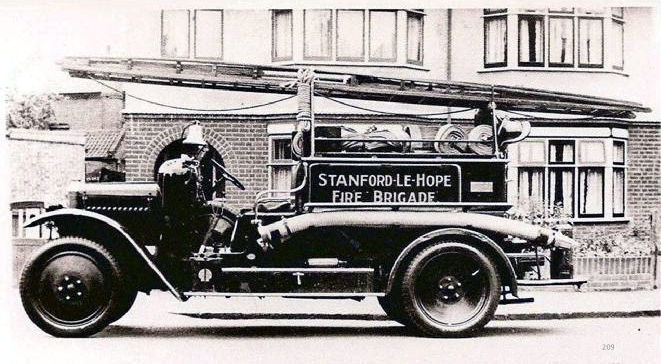The Stanford Fire Brigade
A Fire Brigade for Stanford had been proposed as far back as 1904 when a committee appointed by Parish Council had determined that 20 hydrants would be sufficient for the area. A public meeting was called in the National School, School Lane, on 20th October of that year that was to consider setting up such a service. It is apparent that nothing came of this proposal at the time for when a large blaze broke out at the Stanford Laundry in December 1912, it had to be allowed to burn itself out and considerable damage was done. The Grays Fire Brigade had been summoned but regulations at the time did not permit them to tackle fires outside of their designated area.
When the threat of aerial bombardment by enemy Zeppelin airships became a reality during World War One a brigade was finally formed and established in January 1916. Initially the brigade was located in Copland Road near the National School where this photo was taken but later a site at the rear of the bank building in Central Road was selected opposite Mr.Belcher’s plant nursery.
The threat of attack by airships became a reality as by 1916 they were making sorties up the river to bombard London and other targets along the river front with the Kynoch Explosive works, refineries and oil storage depots at Borley Farm and Shell Haven obvious targets. One cannot help but admire the raw courage of the German airship crews and that of the Royal Flying Corps pilots who attacked them. The slow moving airships consisted of large fabric covered cells filled with highly flammable hydrogen gas, so that they were vulnerable to attack by the RFC who dropped explosive darts on them, and also to ground fire by gun batteries such as those installed near the Kynoch works. If an airship was hit the resulting fires and explosions and were highly hazardous for the RFC pilots and were likely to result in a horrible death for the airship crews. Nonetheless many of the airships did evade the defences and were able to make repeated sorties.
The Stanford Fire Brigade went on to see much action during the Second World War particularly with the bombardment of the refineries and dealing with one of the worst civilian disasters in the area when a parachute mine exploded at the junction of Corringham Road and Burgess Avenue on 8th April 1941 resulting in the deaths of ten people and the injury of several more with extensive damage to housing in the vicinity including the Rainbow Stores.
The brigade was stood down shortly after the Second War.
